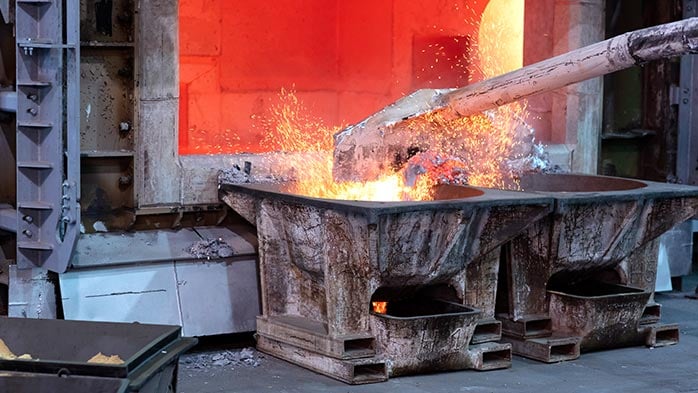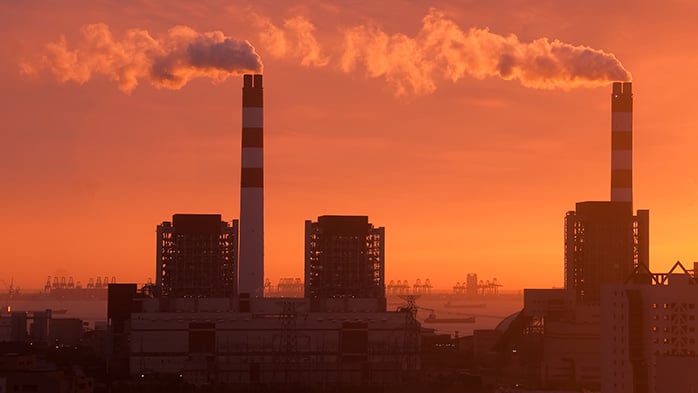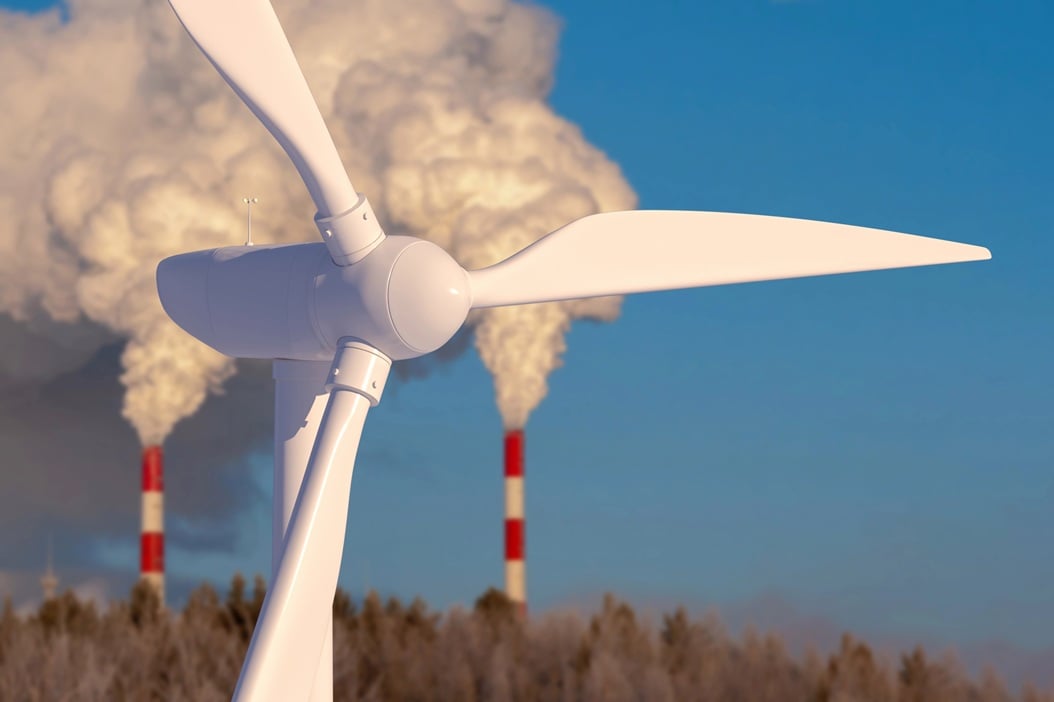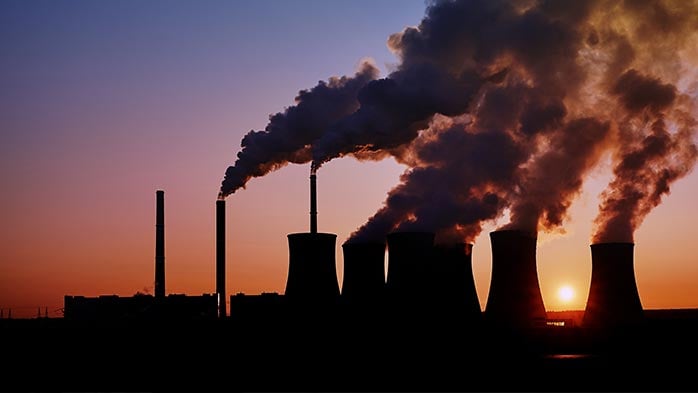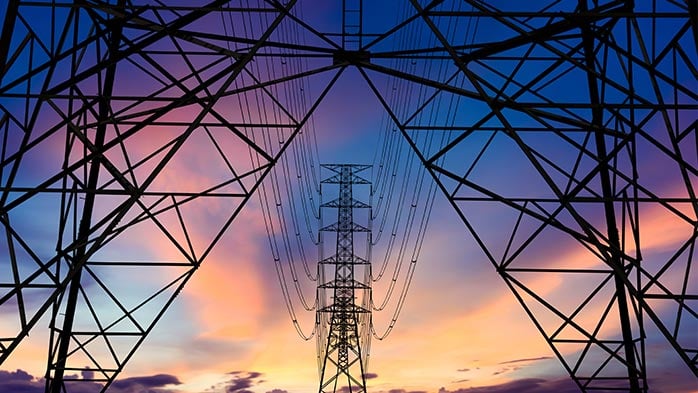Steel is defined as a ‘hard-to-abate’ sector, typically because decarbonisation will require the wholesale shift from coal as a reductant – used since the iron age in one form or another – to hydrogen. But it is also ‘hard-to-abate’ from a financial perspective. Focusing on Europe, our analysis shows that ~$435 bn of financing will need to be mobilised to transition the integrated sector to hydrogen-based steelmaking.
We estimate the sector will make excess profits of ~$24 bn this year, but our forecasts show the sector will return to cash neutrality in 2022 (n.b. following a strongly cash negative result in 2020). As such, internally generated cash flows from the current run of good profitability are not sufficient to fund the transition and these funds are far more likely to be used to shore up balance sheets for potentially difficult times as the carbon price rises.
Steel decarbonisation requires a step change in technology
The steelmaking and processing sector accounts for between ~7–8% of GHG emissions globally and upwards of ~10% if the upstream supply chain is included. As such, the sector is a key focus of decarbonisation. However, compared with aluminium, for example, where significant decarbonisation can be achieved with a simple switch to low-carbon power, the transition for steel will be more difficult, requiring new and not yet fully commercialised technology configurations to be deployed.
Whilst carbon capture usage and storage (CCUS) might play a minor role – allowing some ‘traditional’ integrated capacity to continue – the reality is that decarbonisation of the steel sector will require a switch from the current reductant, coal, to hydrogen. In turn, this implies the wholesale replacement of existing integrated iron making operations with hydrogen-based alternatives.
The integrated steelmaking sector in Europe – the most advanced region in terms of a developed carbon market, a carbon price and emissions cap – is probably under the most pressure globally to decarbonise. It is subject to a carbon charge and, whilst it currently receives a partial free allocation of emission rights, our analyses show the sector is significantly disadvantaged versus imports and, as a result, production capability and profitability are affected. This disadvantage will begin to fully manifest itself as profitability of the steel sector pulls back from recent highs and as the carbon price rises. As a consequence, we believe the weakness of some European integrated players will be exposed and closures are possible in the medium term.
Current safeguard measures do assuage this effect to some extent, since they restrict imports into the EU and, once quotas are filled, the 25% surcharge that applies on further imports will keep prices elevated. This would support higher prices and levels of production.
In addition, broader stakeholder pressure means that integrated steel companies need to accelerate their decarbonisation plans. Both these factors mean that the European integrated sector is under great pressure to show progress on decarbonisation and all companies are exploring some form of hydrogen-based option.
Using the European integrated sector as a case study, we look at the implications for investment cost and the renewables capacity needed to support such a transition.
The cost of decarbonising European steel is high
The European integrated sector has historically produced ~98 Mt/y of crude steel and, assuming CCUS will play only a minor role in decarbonisation, the bulk of this volume will need to be decarbonised through a switch to hydrogen-based steelmaking. Two broad process routes are currently being discussed to achieve this, including:
- Replacement of the entire BF/BOF steelmaking route with hydrogen-based direct reduced iron (H2-DRI) and electric arc furnace steelmaking (EAF), potentially also including hot strip rolling if a thin slab/rolling option is chosen.
- Replacement of the BF ironmaking route only with H2-DRI and melter to provide a hot metal equivalent for use in existing BOFs.
Each route has its own advantages. The former allows the installation of modern equipment up to the sheet rolling stage, which may open new product options and should result in good efficiencies. The latter allows the existing steelmaking, casting and rolling to be retained, which would ensure continuity of product homologation, a key factor for integrated producers supplying sophisticated segments, such as the auto sector.
Interestingly, our analysis shows the capex. requirement for each option is broadly similar. Whilst the latter option requires replacement of less equipment, the retained BOF will operate at a lower scrap rate than an EAF, therefore, a higher proportion of DRI will be required overall. This increases the size and investment requirement of the electrolyser and DRI equipment.
Based on data for the individual facilities included in CRU’s Steel Capex. database covering all steelmaking plant, we assess the capex. requirement for both options at an average of ~$950 /annual t steel, not including pellet capacity. There will be additional costs to integrate facilities both with each other and with existing infrastructure that experience tells us could add a further ~10–20% (c.f. a traditional integrated slab plant would have a full investment cost of ~$800 /annual t).
Thus, the replacement of ~98 Mt of traditional integrated steel production in Europe would require an investment of ~$105 bn (n.b. installed capacity would likely need to be higher than the 98 Mt of production, therefore, the investment cost should feasibly be 10–15% higher than this level). To put this figure into context, currently, we estimate the book value of ‘property, plant and equipment’ across the entire European integrated sector – covering both upstream iron and steelmaking and downstream processing – at ~$47 bn. Assuming upstream iron and steelmaking accounts for ~60% of this value (i.e., $28 bn), decarbonisation of the integrated steel sector will require an investment that is ~4x the current value of the assets being replaced. Further, the European integrated sector has an estimated annual capital expenditure – both sustaining and developmental capex. across both upstream and downstream steelmaking – of ~$4.5 bn. If the sector is to decarbonise in the next 20 years, an investment cost of $105 bn on low-carbon steelmaking equipment only (i.e., ~$5.3 bn/y) suggests the equivalent level of capex. spend would have to lift significantly.
Both factors will have significant implications for balance sheets and funding.
Power requirements add significantly to the bill
Assuming a 50:50 mix of the two options, 98 Mt of hydrogen-based steelmaking capacity will require ~4.5 Mt/y of hydrogen, equivalent to ~255 TWh at typical electrolyser efficiencies, and a further ~60 TWh for melting/steelmaking (n.b. integrated mills are typically largely self-sufficient for electricity, so this is an additional requirement). This total of 315 TWh of electricity for steel can be compared with European electricity generation of 3,220 TWh in 2019, equivalent to a ~10% additional requirement.
Of more interest, however, is the investment required to build renewable power capacity to support such a transition and the storage requirements to ensure continuous supply.
Taking typical build costs of renewable energy projects from CRU’s Renewables database (n.b. here solar and offshore wind have been used as these are expected to provide the bulk of future supply growth) implies an investment requirement of ~$250 bn. However, renewables on their own do not provide continuous power, which can be managed either by sizing electrolyser capacity to peak renewable output or through some form of storage to smooth out the peaks and troughs of renewable supply. Our analysis shows that the storage option would be the cheaper, although a mix may apply in practice for operational reasons. Thus, using expected future battery storage costs and determining storage requirements based on typically solar/wind output profiles, we estimate an additional $80 bn would need to be spent to ensure a continuous power supply.
Thus, overall, we have a high-level capex. requirement estimate of $435 bn to transition the European integrated sector to low-carbon hydrogen production (n.b. in addition to current sustaining and development capex. downstream). Based on median emissions from the European integrated sector as determined by CRU’s Emissions Analysis Tool (i.e., ~1.9 tCO2/tls) this should provide a saving of ~186 MtCO2 at a unit investment cost of ~$2,350 /annual tCO2 saved.
Recent high profits are not enough to fund the investment
We have been asked several times whether the recent excess profits earned by the steel industry, driven by post-Covid supply/demand imbalances, should be sufficient to pay for the transition to low carbon. Our answer is no.
CRU’s Steel Cost Review tracks the profitability of the European, Chinese, US and Indian steel markets on a monthly basis and provides a forecast. This analysis suggests that, from January 2021, when the steel market began its current rapid ascent, through to December 2021, the European integrated sector will have made a total, cumulative EBITDA profit of ~$40 bn for the year. We anticipate that ~$15 bn of this will be absorbed by normal levels of sustaining and developmental capex., financing costs and taxes, leaving, at most, ~$24 bn for potential reinvestment. However, we also expect that some of this ‘excess’ profit will be absorbed by additional sustaining capex. delayed from 2020, a strongly cash negative year, therefore, not all will be available for reinvestment in decarbonisation.
We expect the profitability in the global steel sector will pull back next year and overall profitability of the European sector will fall back to just above ‘steady-state’ levels, generating a cumulative profit for the year of ~$10 bn in our view. Given typical levels of sustaining and developmental capex., financing costs and taxes (n.b. taxes will be lower at this level of profit), this implies the European integrated sector will be in a marginally ‘cash positive’ position next year. Under steady-state conditions we would expect the sector to be broadly ‘cash neutral’, with necessary capex., financing costs and taxes absorbing the ~$6 bn of expected profits.
What this shows is that the steel cycle is fickle and 1 year of excess profits for the industry, whilst welcome, is not sufficient to fund the transition to low carbon. In fact, given the effect of higher carbon prices on cost competitiveness that, for some, will raise questions of mill survivability as the steel market falls, we believe excess profits are more likely to be used to strengthen balance sheets than for reinvestment into low carbon.
If you would like to discuss the financial implications of steel sector decarbonisation, please contact us using the details given and we will be happy to talk. The steel sector remains a ‘hard-to-abate’ sector and a proper understanding of the technological and financial implications is needed to chart the likely trajectory of progress in this area. CRU Sustainability provides that understanding.




